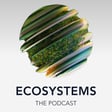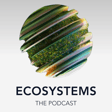
E4: Maurizio Montalti - Unravelling the potential of mycelium
In this episode, we dive into the world of mycelium-based innovation with Maurizio Montalti. Working at the junction of design and biotech, Maurizio is one of the early pioneers committed to the study and development of mycelium-based technologies and products.
He is Founder and Director of the design-research practice Officina Corpuscoli (NL), and Chief Mycelium Officer and co-Founder of SQIM, a (bio)technology company unravelling the potential of mycelium for application across different industries, including interior design, architecture, the automotive and fashion.
Montalti’s work has been honoured with multiple awards, featured widely in the global media, and globally exhibited in prestigious museums and institutions, including New York’s Museum of Modern Art, Paris’s Centre Pompidou and the Design Museum in London.

